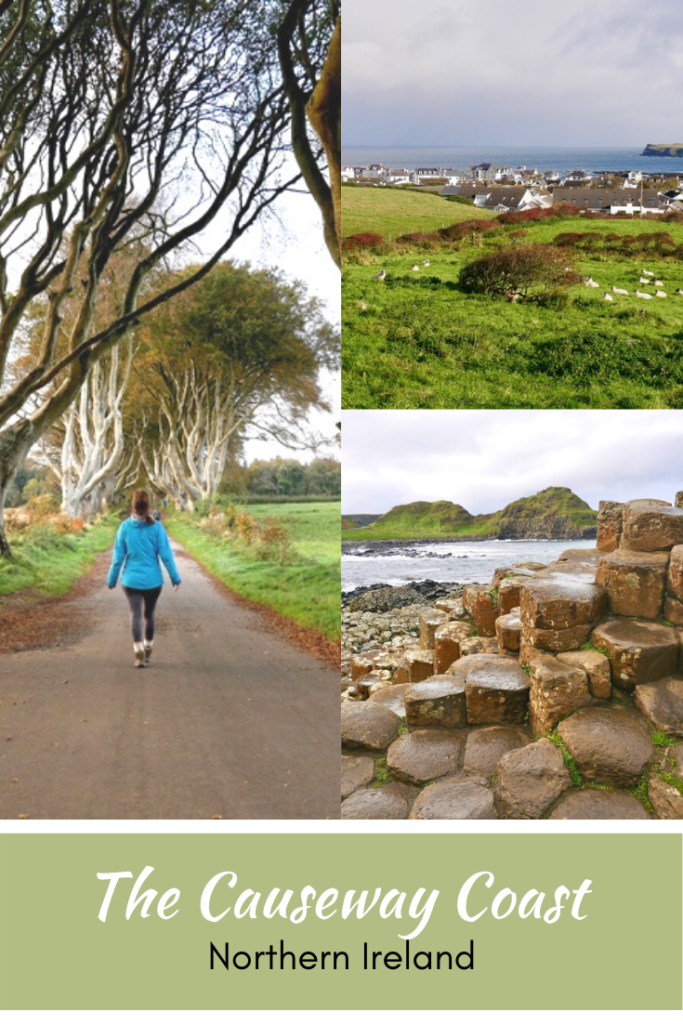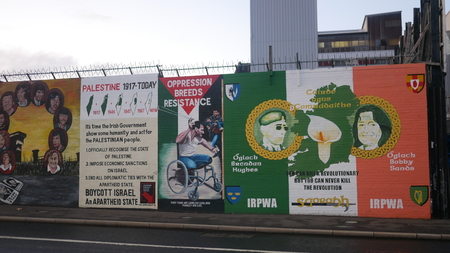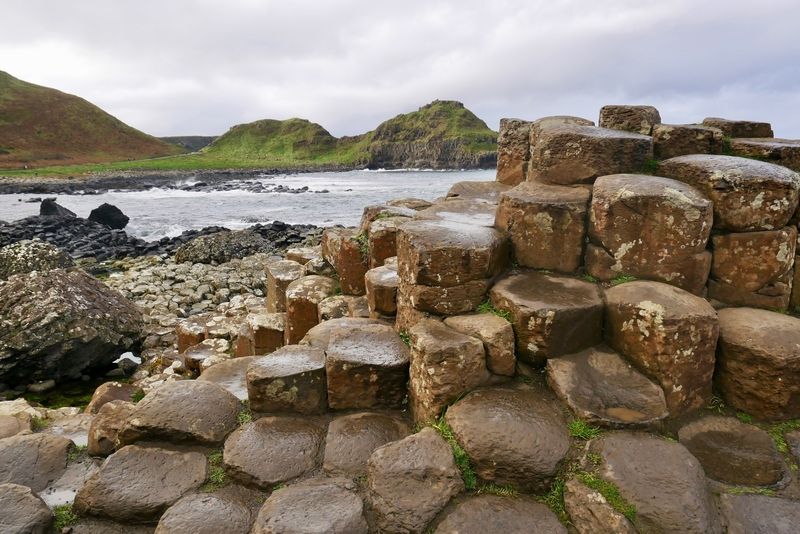
The Causeway Coast in Northern Ireland
According to legend, the hexagonal columns along Northern Ireland’s Causeway Coast were built by Irish giant, Fionn mac Cumhaill. As the story goes, Fionn created a causeway across the North Channel in order to challenge Scottish giant, Benandonner, to battle.
Yet, Fionn soon realized that he had underestimated his enemy. In an ingenious plot twist, he conned his Scottish foe by disguising himself as a baby. The plan worked flawlessly.
Upon crossing the causeway to Northern Ireland and seeing the large baby, the Scottish giant panicked. If the child is so big, he wondered, then how terrifying must his father be?
Out of fear, he retreated home—destroying bits of the causeway in his wake.
***
It isn’t difficult to see why Northern Ireland’s Causeway Coast is steeped in mythology. The windswept scenery is rugged and raw—enshrouded in mystery and battered by the elements.
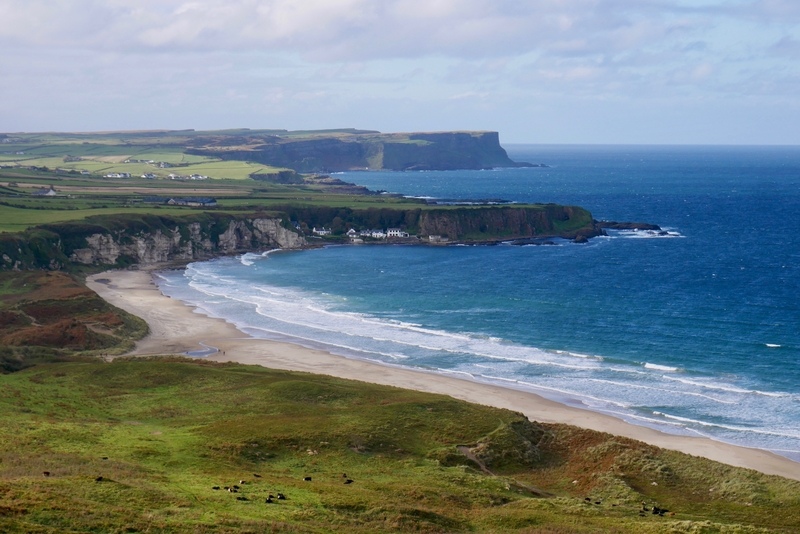
The Giant’s Causeway is undoubtedly Northern Ireland’s primary tourist draw. But despite its popularity and photogenic appeal, it is by no means the only place to visit along the area’s wild and scenic coastline.
The Causeway Coast (also known as the Antrim Coast) is among the most iconic stretches of road in the British Isles. The coastal road picks up at the terminus of Ireland’s Wild Atlantic Way. Meandering past crumbling castles, towering sea walls, and quaint coastal villages, it is at once picturesque and wild, touristy and unspoiled.
TRAVEL IN NORTHERN IRELAND
Dan and I traveled along the Antrim Coast after completing a two day drive around County Donegal. As soon as we crossed from Ireland into Northern Ireland, we noticed a number of subtle changes. Road signs converted from kilometers to miles. The pound sterling replaced the euro. The crowds that had previously evaded us seemed to spring up out of thin air.
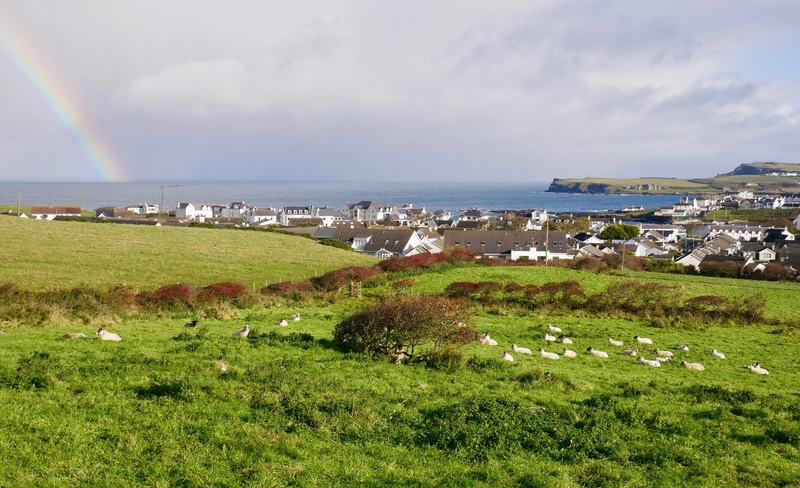
We were—in every practical sense—in the United Kingdom.
-
THE NORTHERN IRELAND QUESTION
The imaginary line that bisects the emerald isle divides the Republic of Ireland from British-controlled Northern Ireland. And though the region is currently safe to visit, we saw evidence of the island’s historical divisions everywhere.
During the late 20th century, a period of conflict known as ‘The Troubles’ resulted in violence along the island’s Protestant/Catholic divide. Most Catholics wished to join the Republic of Ireland. The majority of Protestants wanted to remain part of the United Kingdom. Tensions flared and violence ensued. The media often depicts the conflict as an entirely religious battle, but it is just as much about the area’s political allegiance.
Following the Good Friday Agreement of 1999, Northern Ireland’s political climate entered a more reconciliatory era.
And today, though tensions still simmer on occasion, the unrest has largely subsided.
THE CAUSEWAY COAST
The Wild Atlantic Way is a winding road that stretches along the entirety of Ireland’s western coastline—past the Ring of Kerry, the Cliffs of Moher and Donegal. As the road enters Northern Ireland, it transforms into the equally-stunning Causeway Coast.
Clinging to Ireland’s rugged northern coastline between Derry and Belfast, the wild Causeway Coast is a glorious mix of quaint villages, windswept beaches and exhilarating clifftop walks.
DUNLUCE CASTLE
The Dunluce Castle was the first stop on our Causeway Coast road trip. The picturesque castle sits atop sheer cliffs, between Portrush and the Giants Causeway. The structure dates back to the 1500s and is one of the finest castles along the Antrim Coast in Northern Ireland.
Due to the Dunluce castle’s precarious cliffside perch, much of its structure has vanished into the sea over the centuries. It lies crumbling in ruins, unrestored.
Yet, even in its ruined state—or perhaps because of it—the Dunluce Castle remains one of the most evocative and atmospheric castles in the area.
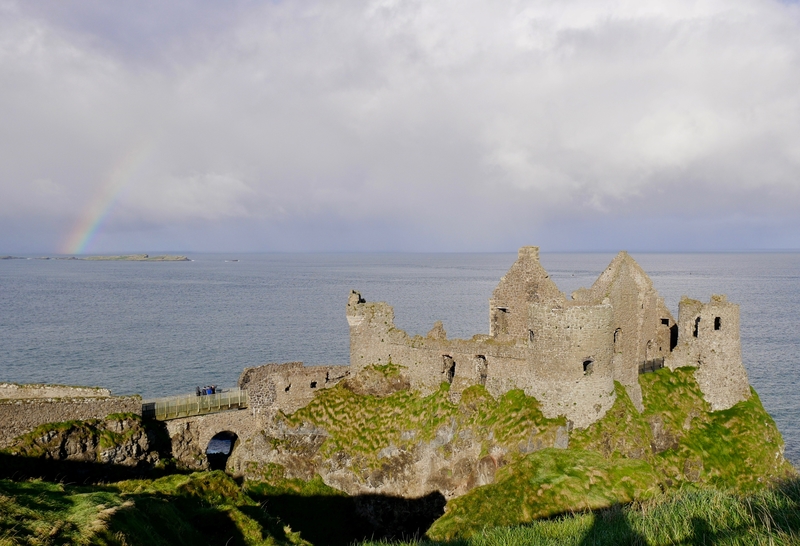
Though visiting the Dunluce Castle is one of the top things to do in Northern Ireland, Dan and I chose to view the castle from its exterior.
Entrance to the castle costs £5 per person, and we had yet to exchange our euros for pound sterling.
From the roadside, views of the castle are spectacular.
THE GIANT’S CAUSEWAY
The Giant’s Causeway sits along a particularly stunning stretch of coast that lies east of the Dunluce Castle. The iconic coastline boasts thousands of closely-stacked hexagonal columns that reach unevenly toward the sea.
Today, the Giant’s Causeway is a well-known backdrop to numerous cinematic hits—including the ever-so-popular Game of Thrones Series.
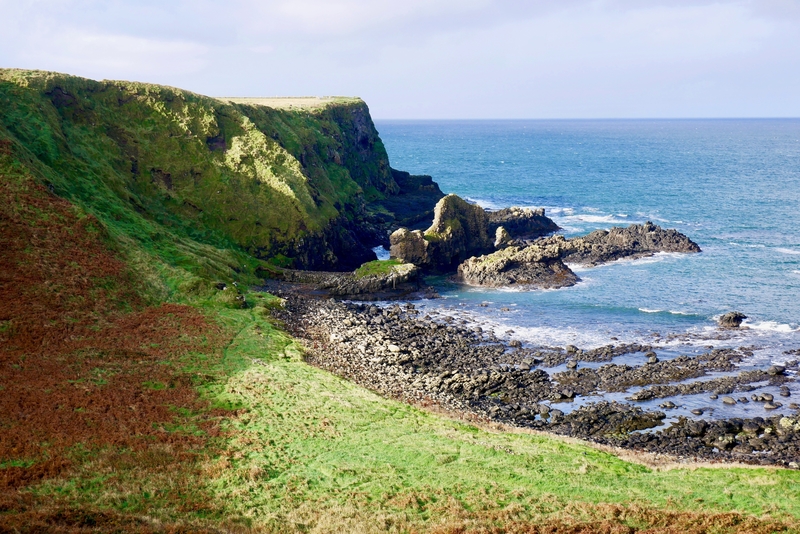
Visiting the Giant’s Causeway is free, though tourists must pay to park their vehicles and enter the visitor’s center. We used the parking lot near the Bushmills Heritage Railway and paid a flat fee of £8 to leave the car for a few hours. Had we wanted to park closer to the monument’s trailhead, we would have been required to pay the £12 per person fee of entering the Giant’s Causeway Visitor’s Center.
From the Bushmill Heritage Railway parking lot, Dan and I passed under a tunnel, and followed the walkway to the causeway.
The trail to the heritage-listed site passes alongside a pretty bay, before turning a bend and reaching the sea of stacked basalt columns.

Though local lore ascribes the area’s landscape to Fionn mac Cumhaill, science attributes it to the area’s volcanic activity. According to geologists, lava oozed toward the coastline and cooled off as it contacted the sea. The layers of basalt formed in columns, and the pressure between these columns sculpted them into polygonal shapes that resemble the stepping stones of giants.
Dan and I spent a bit of time scrambling up the natural jungle-gym of stacked rocks, admiring the crashing waves, and trying to dodge Instagram photoshoots.
Then, we followed the main pathway—past a column-flanked hillside—until we reached a spectacular lookout point over the surrounding cliffs.
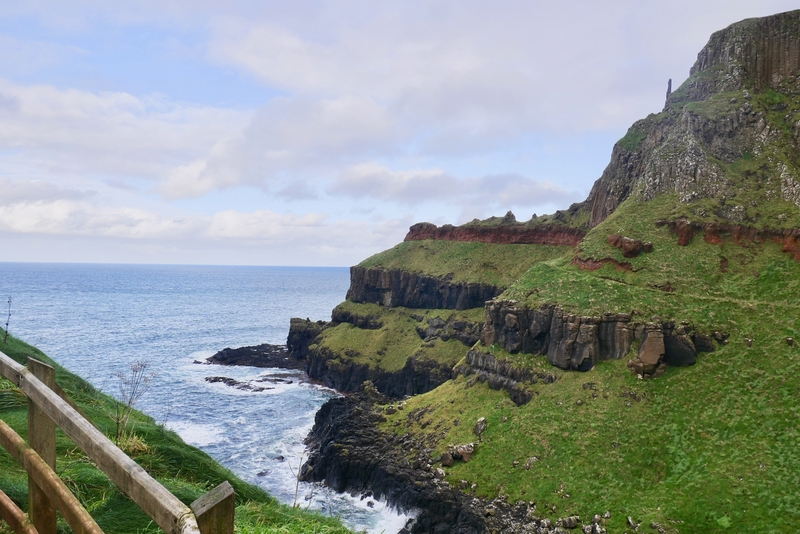
After scrambling around and hiking in the rain, we returned to our car via an upper path that offers birds-eye views of the Giant’s Causeway.
THE OLD BUSMILLS DISTILLERY
Located only a stone’s throw away from the Giant’s Causeway, the Old Bushmills Distillery is a popular stop along the Antrim Coast Route. The distillery was founded in 1608, and is among the most renowned and oft-visited distilleries in Northern Ireland.
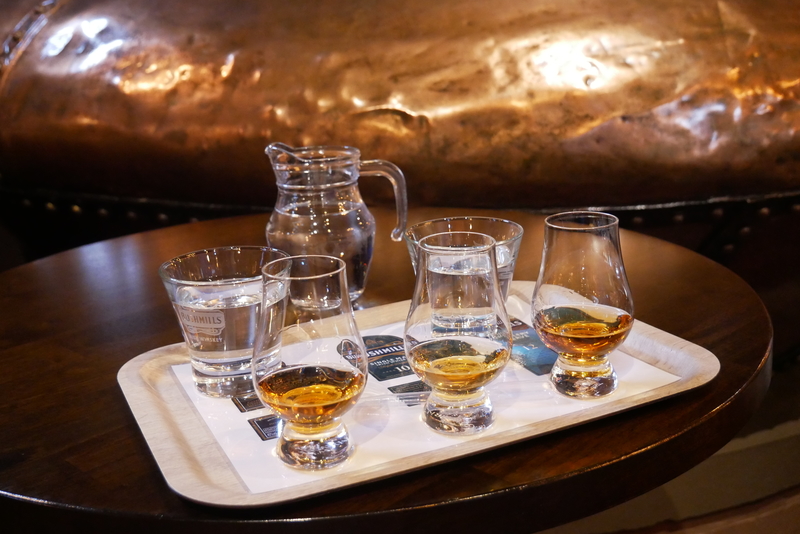
In order to escape the biting cold, Dan and I visited Old Bushmills for a mid-day whiskey tasting.
And while I know little about what makes a good whiskey, I did enjoy sampling drinks from the world’s first licensed distillery.
CARRICK-A-REDE ROPE BRIDGE
From the Giant’s Causeway, the spectacular coastal road continues to the popular Carrick-a-Rede rope bridge.
Spanning 66 feet in length, the Carrick-a-Rede bridge swings 100 feet above the water and rocks below. Over the past 300 years—since fishermen first constructed the bridge as a way of getting to Carrick-a-Rede Island—several versions of the bridge have existed.
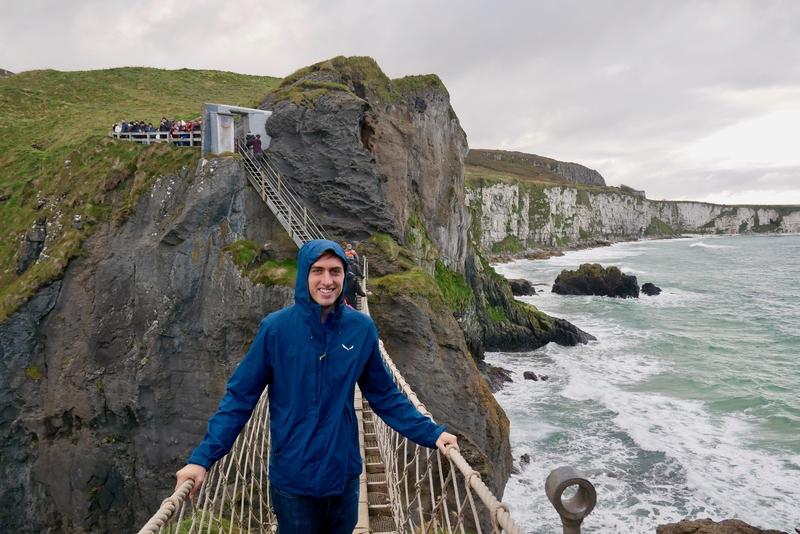
The current rope bridge, built in 2008, is a solidly-built (albeit slightly vertigo-inducing) walkway that overlooks the churning waters below. Visitors can cross the bridge upon paying a £9 fee.
THE DARK HEDGES
After touring a cluster of attractions near the Giant’s Causeway, we veered away from the Antrim Coast and turned inland, toward Belfast. Along the way, we decided to make a quick stop at the Dark Hedges—another of Northern Ireland’s top Game of Thrones tour locations.
The Dark Hedges lie on a quiet road near the town of Ballymoney in County Antrim. As with the Giant’s Causeway, the sleepy tree-lined street has risen to international renown thanks to Game of Thrones.
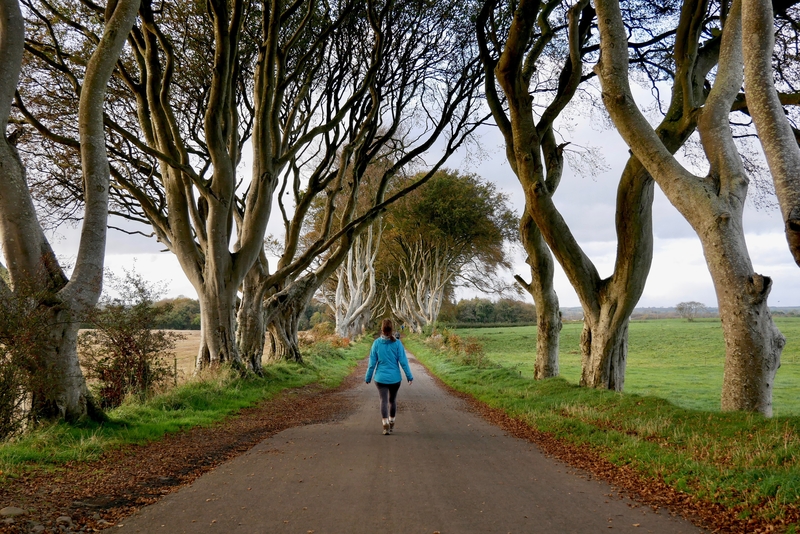
The Dark Hedges make for haunting and eerie photographs. Like twisted octopus tentacles, the trees’ branches reach inward, forming an arch over the road
Due to the area’s popularity, we didn’t find it easy to capture the trees without swarms of people photobombing our pictures. Even on a rainy October day, the crowds were everywhere—-a bit like the Arashiyama Bamboo Forest in Kyoto.
THE BELFAST MURALS ON SHANKILL ROAD
We ended our Causeway Coast road trip in Belfast—Northern Ireland’s capital and largest city.
Admittedly, our packed itinerary allotted us very little time in Belfast. Thus, we headed straight toward the peace walls that bisect the city.
In Belfast, hundreds of colorful murals adorn the city’s walls. The poignant and moving depictions detail a century’s worth of conflicts and political divisions, both at home and abroad.
In Protestant sections of the city, murals display United Kingdom flags and celebrate Northern Ireland’s colonial relationship with Great Britain. Murals in Catholic neighborhoods boast Irish flags and commemorate the nationalists who lost their lives fighting for an end to British rule.
Shankill is Belfast’s largest Protestant community. It is separated from The Falls (the city’s largest Catholic neighborhood) by a peace wall that was first erected during ‘The Troubles.’
Reminiscent to the murals dividing Israel from Palestine, the Shankill Road murals reveal a city that is still divided. Physically, at least.
****
Though Dan and I only spent one day in Northern Ireland, our road trip was chock full of places to visit.
The Causeway Coast was deemed Lonely Planet’s #1 region to visit in 2018. A popular area of timeless beauty and mysterious intrigue, it offers samplings of Ireland and the United Kingdom in a neatly-presented and easy-to-navigate package.
___________________________
Did You Enjoy this Causeway Coast Itinerary Post? Pin it!
